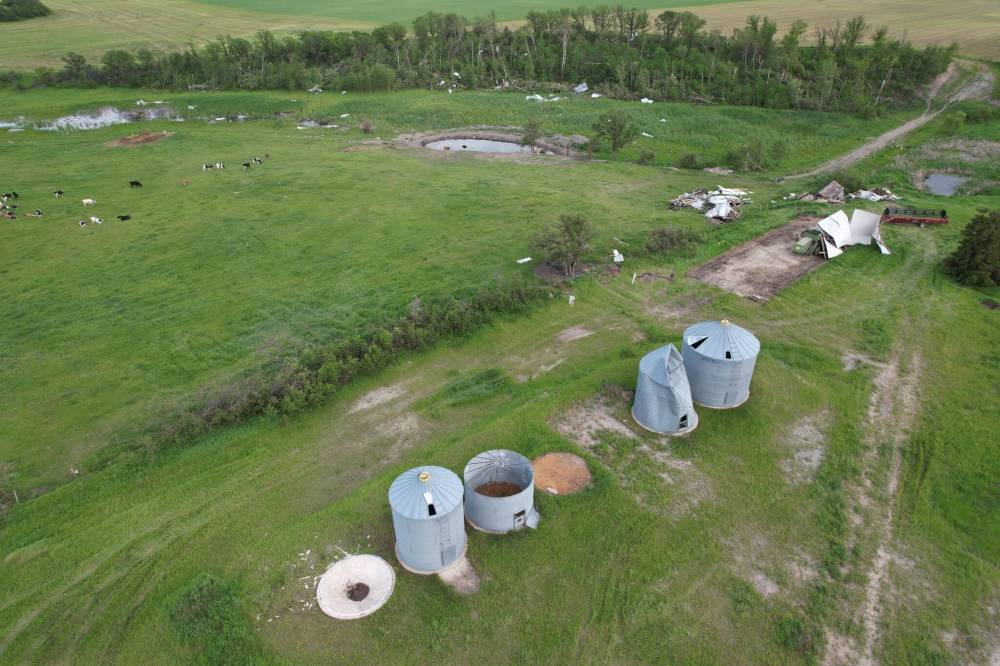BRANDON — A storm that swept through western Manitoba last week spawned five tornadoes, researchers have determined.
Two tornadoes touched down June 12 near Rivers, one in Spruce Woods Provincial Park and the final two near Saint Alphonse, as per a blog post from the Northern Tornadoes Project.
There was also a downburst, a strong downward wind from above, recorded after the Spruce Woods tornado.

Northern Tornadoes Project
Farm buildings, grain silos and trees were damaged by a tornado near St. Alphonse and Swan Lake First Nation on June 12.
Four of the six tornadoes have been categorized as zeroes, the lowest point on the Enhanced Fujita scale, while the Spruce Woods tornado and the Saint Alphonse tornado, which damaged powwow grounds at Swan Lake First Nation, 160 kilometres southwest of Winnipeg, have been assigned ratings of EF1.
Based out of Western University in London, Ont., the project dispatches teams of researchers and students across Canada to study tornadoes and the damage they cause so they can be better understood and predicted.
The tornado project’s blog post noted these were the first confirmed tornadoes for Manitoba this season.
One of the storms that hit Westman last week was a supercell, a long-lasting, highly organized storm capable of producing stronger tornadoes.
“It’s still being researched how exactly they produce tornadoes, but we do know that it’s a combination of a really strong updraft, the thunderstorm and rotation below the storm stretching that vortex near the ground into the vertical, really accelerating the rotation,” David Sills, executive director of the Northern Tornadoes Project said.
A difference between a tornado and a downburst, one of which occurred in Spruce Woods, is that a tornado creates a long, narrow path of damage while a downburst has horizontal height and width that are roughly the same.
Sometimes a downburst becomes a tornado, but in last week’s cast, a tornado morphed into a downburst.
Stills said he was surprised the tornadoes were low on the Enhanced Fujita scale because the radar project staff were monitoring them in real-time and it suggested major damage could have been done.
A two-person team from Winnipeg was dispatched to review the damage done in Westman as well as in Saskatchewan, where one tornado touched down near Saltcoats. The team found no evidence anyone was hurt.
“It was mostly just damaged trees, but there were a couple of sheds that got obliterated and one farm outbuilding with construction on the weak side,” Sills said.
A couple of grain bins got dented or moved, along with damage to the powwow arbour.
The tornado at Swan Lake First Nation, the most powerful of the bunch, had wind speeds that reached 150 km/h. It left a trail 19 kilometres long and as wide as 1.05 kilometres.
With work on last week’s storm complete, Sills said data is being reviewed from a storm that originated in Montana on June 15 and went northwards through North Dakota before ending just west of Winnipeg on Sunday.
“There were a lot of big wind gusts with that, and there’s also some potential tornadoes that occurred along there,” he said.
Since the project launched in 2017, the most powerful tornadoes it has recorded in Manitoba were an EF4 tornado south of Alonsa in 2018 and an EF3 tornado south of Virden in 2020.
— Brandon Sun